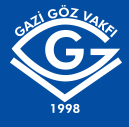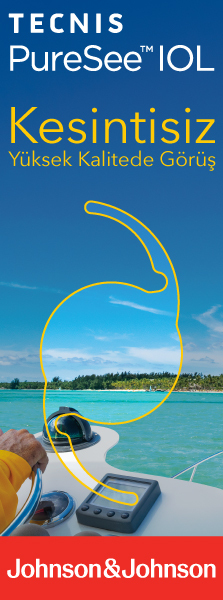Retina-Vitreous
2010 , Vol 18 , Num 1
Optic Atrophy in the Course of Diabetic Retinopathy
1S.B. Ankara Ulucanlar Göz Eğitim ve Araştırma Hast., 2. Göz Kliniği, Ankara, Uz. Dr.2S.B. Ankara Ulucanlar Göz Eğitim ve Araştırma Hast., 2. Göz Kliniği, Ankara, Asist. Dr.
3S.B. Ankara Ulucanlar Göz Eğitim ve Araştırma Hast., 2. Göz Kliniği, Ankara, Doç. Dr. Purpose: To investigate the prevalence and the causes of optic atrophy in patients with diabetic retinopathy followed-up in our clinic.
Materials and Methods: Thirty-two patients with diabetic retinopathy that were followed-up in Ministry of Health Ankara Ulucanlar Eye Hospital Retina Clinic between 2006 and 2009 were evaluated in this study. A complete ophthalmological examination including visual acuity, intraocular pressure, biomicroscobic examination findings, dilated pupil examination of the posterior segment, fluorescein angiography, and visual evoked potential were evaluated at baseline and during follow-up period.
Results: Cases of optic atrophy comprised the 8.1% (32/394) of our patients with diabetic retinopathy. There were 22 female (68.7%) and 10 male (31.2%). The average age of patients was 61.8±10.2 years (30-81 years). Mean follow up period was 31.7±15.2 months (7-66 months). Nonproliferative diabetic retinopathy (NPDR) in 10 cases (31.2%) and proliferative diabetic retinopathy (PDR) in 22 cases (68.7%) were detected as etiologic causes of optic atrophy. The time of developing optic atrophy after the beginning of diabetic retinopathy was 32.3±15.2 months (18-56 months) in NPDR, and 23.9±13.1 months (2-54 months) in PDR. Vitreoretinal surgery had performed in 12 cases (54.5%) of PDR with vitreous hemorrhage. Glaucomatous optic atrophy was determined in 3 cases (9.3%). The statistically significant differences in the number of optic atrophy were noted between the PDR and NPDR (p<0.05).
Conclusion: Optic atrophy was most commonly observed in cases of PDR. In cases of NPDR, the course of diabetic retinopathy and argon laser photocoagulation were notable as a risk factor, while in patients with PDR, in addition to these factors, performed vitreoretinal surgery and intraocular pressure elevation has been came into prominence. Keywords : Glaucoma, nonproliferative diabetic retinopathy, proliferative diabetic retinopathy, optic atrophy





